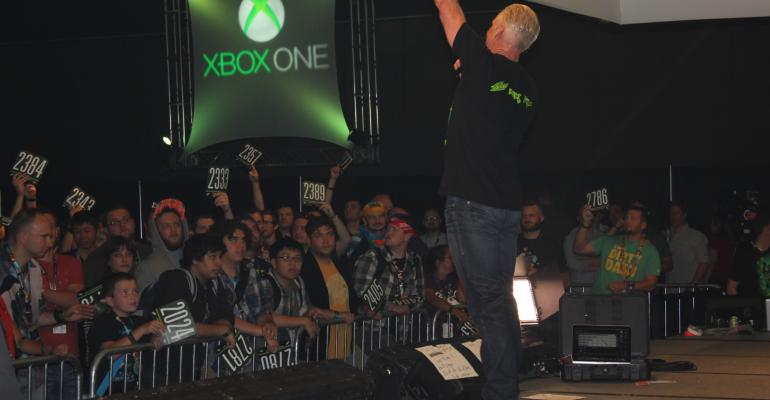A good sponsorship strategy doesn’t start with the sponsors—it starts with the attendees.
“When the attendees are happy, everybody wins,” says Donna Kastner, director, expo/sponsor sales and activation, Velvet Chainsaw Consulting. So, when developing sponsorships, meeting professionals should ask themselves: “Does it improve the attendee experience?” That’s the Holy Grail. “Help make the attendee experience better and they’ll remember you.”
Here are some sponsorship Dos and Don’ts, compiled from the experts.
Don’t: Turn attendees into NASCAR drivers.
“I was looking at a prospectus last week, and it had sponsorships for logos on lanyards and neck wallets, which ride a little higher than lanyards,” says Kastner. “What’s next, shinguards?” If there’s too much logo noise, attendees will tune out, and that’s not good for sponsors.
And too many options can also be overwhelming. Go through the prospectus and ask yourself, does the attendee value it? If yes, keep it in; if no, pull it out. If you’re not sure, bundle it, she says. Logos on key cards, for instance, is one item that she puts in the “no” column. Bag inserts and Powerpoints slides with tons of logos on it are others. And don’t frustrate the attendee. For example, too many ads on the app is sure to be annoying.
Do: Position sponsors as thought leaders
“Sponsors are not looking to be seen as funders, they are looking to be seen as thought leaders,” says Kastner. “Every time conference organizers can shine that light on them, that’s meaningful.” It doesn’t mean that they have to all be speakers, but try to “connect them to a big idea in some way.”
Don’t: Let the sponsor do a commercial before the keynoter
In the keynote introduction, attendees want to hear about the keynoter, not the sponsor’s products. Instead, have the sponsor promote a white paper or talk about solutions related to the keynote. Or, before the speech, how about having your sponsor host a VIP experience or book signing related to that keynoter?
Do: Create packages that deliver value
“You've got to get people away from just selling sponsorships a la carte, just covering their expenses, and instead looking at it more holistically,” says Bruce Erley, president and CEO, Creative Strategies Group. Packages that bundle various opportunities deliver more value for sponsors and more revenue for the organization. Sponsors, Erley says, “are looking for a comprehensive package, and those associations that offer them will be the ones that sell more sponsorships.” The key is to personalize the package, tailoring it to the needs of each individual sponsor, adds Phelps Hope, CMP, vice president, meetings and expositions, Kellen Meetings. Often, a package will offer a variety of ways to connect with members at the conference and throughout the year: branding (for example, a logo on a banner), face-to-face interaction, technology, and the Web.
Don’t: Make it about what the association needs
When approaching companies about sponsorship opportunities, make the proposal about how the package will help them reach their goals, not about why the association needs them to cover certain expenses, says Erley. Associations have a tendency to do this more than other sectors of the sponsorship industry, like sports and the arts, says Stacey Goldberg, vice president, client leadership at IEG, Chicago.
Do: Be an ROI consultant
“We found the most success turning ourselves, not into salespeople, but into consultants,” says Heather Schuster, director, advertising, sponsorship, partnerships at the National Association of Broadcasting.
She sits down with the sponsors and asks them questions—What are their goals? Who are they trying to reach? What is their budget?—and then crafts a strategy based on their needs. “Understand their vision and know why they are at the event,” adds Schuster. It takes more time, but the pay off is worth it for the sponsors and the association in terms of higher renewal rates and revenues.
Talk about their ROI, not yours, agrees Hope. “Become a vested partner in their success,” he says. “They have got to have a justification for the sponsorship; there has to be some measurability to it.”
Don’t: Stop advising after the sale
Remain a consultant through the entire process and help sponsors activate and execute on their investment, says Kastner. Provide any resources or research that you can and be available on site at the meeting should they need assistance.
Do: List your sponsors
On the Web page that lists sponsorships, planners typically indicated which items have already been purchased. Take that a step further and say which company a sponsorship was sold to, suggests Sam Lippman, president of Lippman Connects. If a prospect sees that its major competitor is sponsoring a reception, for example, it may be more inclined to get on board.
Don’t: List pricing
It’s fairly common for conference organizers to list prices next to individual a la carte sponsorship opportunities as well as tiered packages, but Lippman sees it differently. By listing prices, you may be stopping a conversation with a prospect before it starts. The idea, he says, is to have the prospects call you because they’re interested in the offerings, then you can have a conversation about their needs, goals, and budgets.
Do: Make it dynamic
“It can’t just be a sign; it can’t be static” says Sharyn Collinson, vice president and managing director, Fixation Marketing. “It’s got to be dynamic and interactive.” She finds that companies are more willing to explore and purchase sponsorships where there’s more opportunity to interact and engage with prospects at the show.
Don’t: Send a form letter
Generic mailings won’t work. Learn about a company, its industry, and its issues before you approach it about sponsoring your event. Tailor the proposal instead of just sending a form letter, says Goldberg. And make sure you are approaching the right people in the company—those who deal with sponsorships.




